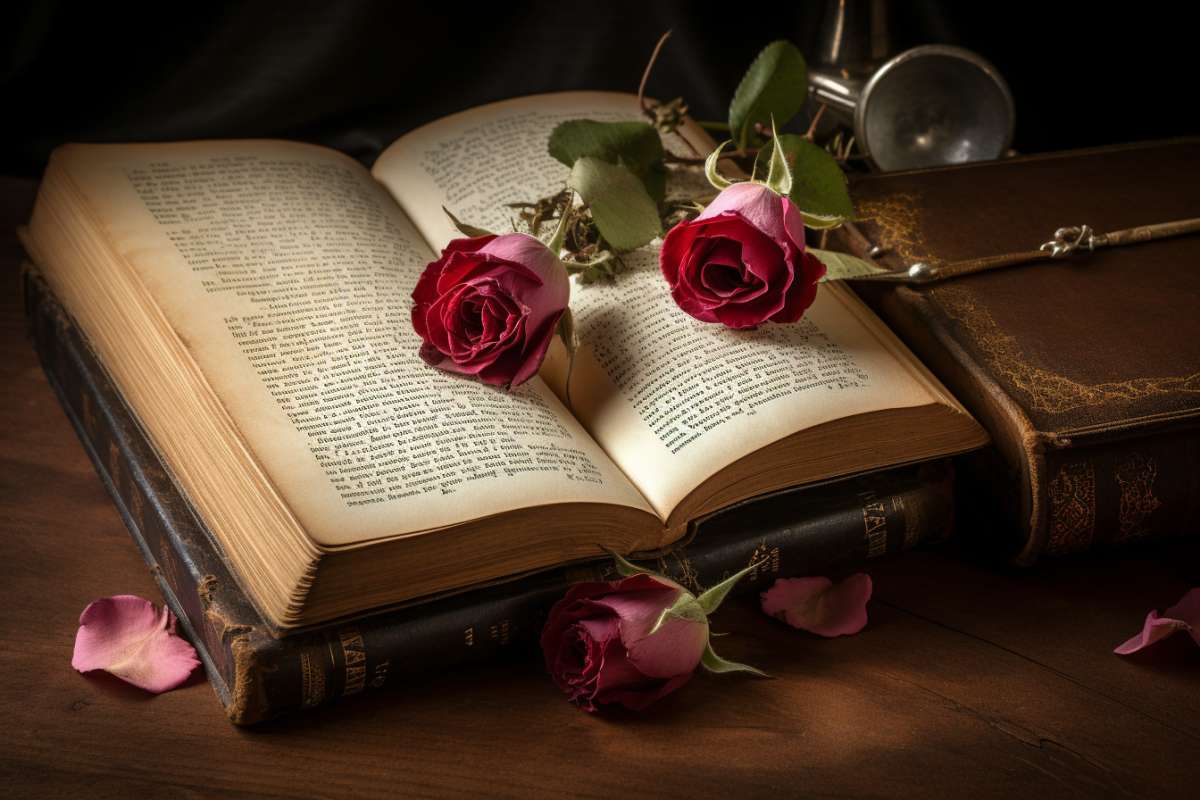Table of Contents
- Introduction
- Romantic Literature in Ancient Times
- Romantic Literature in the Middle Ages
- Romantic Literature in the Renaissance
- Romantic Literature in the Enlightenment
- Romantic Literature in the Victorian Era
- Romantic Literature in the 20th Century
- Romantic Literature in Modern Day
- Conclusion
Introduction
Romance novels are a popular genre of literature that has been around for centuries. While the modern-day romance novel is often associated with a specific type of story, the roots of this genre can be traced back to ancient times. In this article, we will take a look at the history of romance novels, exploring their evolution through the ages and the impact they have had on literature and popular culture.
Romantic Literature in Ancient Times
The origins of romantic literature can be traced back to ancient times. The Greeks and Romans wrote love stories that have survived to this day. One example is the story of Pyramus and Thisbe, which dates back to the first century A.D. This tragic love story tells of two young lovers who are forbidden to be together and ultimately die for love.
Another famous example of romantic literature from ancient times is the story of Tristan and Isolde. This story was first told in the 12th century and has been retold in many forms over the centuries. The story tells of a knight named Tristan who falls in love with Isolde, the wife of his uncle. The two engage in a love affair that ultimately leads to tragedy.
Romantic Literature in the Middle Ages
The Middle Ages saw the rise of chivalric romance, which was a genre of literature that focused on knights and their adventures. These stories often featured themes of love and romance, as well as tales of heroism and chivalry. One example of this type of story is the tale of Sir Gawain and the Green Knight, which dates back to the 14th century. This story tells of a knight who must face a series of challenges in order to prove his worth.
Also read: The Origins of Horror: Exploring Fear in Literature and Film
The Middle Ages also saw the rise of courtly love, which was a code of behavior that emphasized the virtues of chivalry and romance. This code of behavior was often reflected in the literature of the time, which featured stories of knights who would perform great feats of valor in order to win the favor of their lady loves.
Romantic Literature in the Renaissance
The Renaissance saw a resurgence of interest in classical literature, which included stories of love and romance. One famous example is the story of Romeo and Juliet, which was written by William Shakespeare in the 16th century. This tragic love story tells of two young lovers who come from feuding families and ultimately die for love.
The Renaissance also saw the development of the sonnet, a poetic form that was often used to express love and romantic sentiments. Poets such as William Shakespeare, John Donne, and Edmund Spenser all wrote sonnets that explored the themes of love, beauty, and desire.
Romantic Literature in the Enlightenment
The Enlightenment was a time of great social and political change, and this period also saw a shift in the way that love and romance were portrayed in literature. One example of this is the novel Pamela, which was written by Samuel Richardson in 1740. This novel tells the story of a young woman who resists the advances of her employer and ultimately marries a man of her own choosing.
Also read: Timeless Tales: A Look at the History of Historical Fiction
The Enlightenment also saw the rise of the Gothic novel, which often featured themes of romance and suspense. One famous example is the novel Frankenstein by Mary Shelley, which tells the story of a scientist who creates a monster and ultimately suffers the consequences of his actions.
Romantic Literature in the Victorian Era
The Victorian era saw a resurgence of interest in romantic literature, with many authors writing stories that explored the themes of love, passion, and desire. One famous example is the novel Jane Eyre by Charlotte Bronte, which tells the story of a young woman who falls in love with her employer, Mr. Rochester.
Another example is the novel Wuthering Heights by Emily Bronte, which tells the story of a passionate and destructive love affair between two people from different social classes.
Romantic Literature in the 20th Century
The 20th century saw the rise of the modern-day romance novel, which is often characterized by a specific formula. These novels typically feature a heroine who is searching for love and a hero who is strong, handsome, and protective.
Also read: The Perfect Crime: Crafting Intricate Plots in Mystery Stories
One of the most popular authors of this genre is Danielle Steel, who has sold over 800 million copies of her books worldwide. Other notable authors include Nora Roberts, Nicholas Sparks, and Debbie Macomber.
Romantic Literature in Modern Day
In recent years, the romance novel has continued to evolve and change. Many authors are now exploring themes of diversity and inclusivity, with stories featuring characters from different backgrounds and identities.
One example of this is the novel The Kiss Quotient by Helen Hoang, which tells the story of a woman with Asperger's syndrome who hires a male escort to help her learn about intimacy and relationships.
Conclusion
The history of romance novels is a long and varied one, with stories of love and romance appearing in literature from ancient times to the present day. While the genre has evolved and changed over the centuries, the enduring popularity of these stories is a testament to their timeless appeal.
Whether you enjoy the chivalric romance of the Middle Ages, the Gothic novels of the Enlightenment, or the modern-day romance novels of Danielle Steel and Nicholas Sparks, there is something for everyone in the world of romantic literature.
